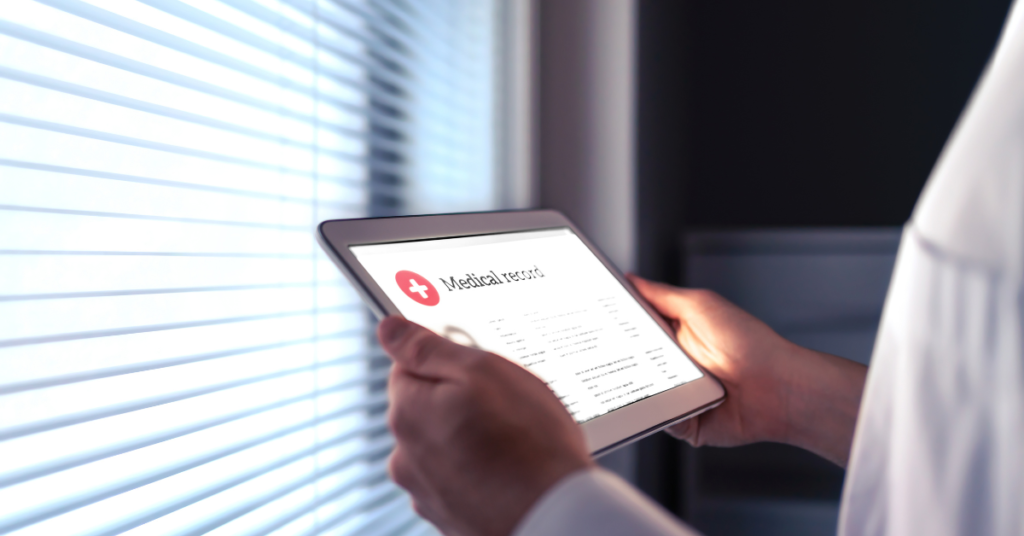Imagine a world where lost patient records, scheduling mishaps, and unreadable handwriting are problems of the past. Sounds good, right? With electronic medical records (EMRs), that future is here. But how does an EMR system work in a real-world setting? What does a practical electronic medical record example look like for Filipino doctors, clinics, and healthcare providers?
For many healthcare professionals, paperwork remains one of the biggest obstacles to efficiency. Searching for old patient files, managing manual appointment logs, and deciphering illegible handwriting can slow down operations and lead to critical mistakes. But with an EMR system, these challenges are minimized. From improving record-keeping to optimizing patient care, EMRs are transforming how clinics, hospitals, and telemedicine providers operate.
In this article, we’ll explore how Filipino healthcare professionals can benefit from EMRs and highlight real-world examples of how they are already improving workflows. Whether you run a private clinic, a medical center, or a telemedicine practice, the right EMR system can streamline your operations, enhance patient care, and boost overall efficiency. Let’s dive in.
What Is an Electronic Medical Record (EMR)?
An electronic medical record (EMR) is a digital version of a patient’s medical chart. Unlike paper records, EMRs store data in a centralized, secure system, allowing healthcare providers to access real-time patient information anytime, anywhere. This eliminates the hassle of dealing with misplaced files, manual errors, and administrative bottlenecks.
According to a study published in the National Center for Biotechnology Information (NCBI), EMRs significantly enhance healthcare delivery by improving documentation accuracy, reducing medication errors, and making patient records instantly accessible to authorized personnel. The study found that EMRs reduce documentation errors by up to 70%, improving both efficiency and patient outcomes.
Beyond convenience, EMRs offer features such as automated appointment scheduling, billing integration, and e-prescriptions. They also help ensure compliance with the Data Privacy Act of 2012, safeguarding patient data with encryption and multi-factor authentication. Unlike traditional records, which are vulnerable to damage or loss, digital records are securely stored and regularly backed up.
For Filipino doctors, clinics, and healthcare providers, an EMR isn’t just a tool—it’s a game changer. It enhances workflows, reduces administrative burdens, and allows medical professionals to focus on what truly matters: patient care. But how do these benefits translate into real-world practice? Let’s look at some electronic medical record examples in action.
Electronic Medical Record Example in Action
1. A Private Clinic: Faster Consultations & No Missed Follow-Ups
Dr. Reyes, a general practitioner in Manila, used to rely on a paper-based system for managing patient records. Her clinic had shelves filled with folders, making it difficult to retrieve past patient histories quickly. Often, her staff spent unnecessary time searching for files, leading to longer wait times and frustrated patients.
After switching to an EMR system, everything changed. Now, every consultation is digitally recorded, enabling Dr. Reyes to:
- Instantly access a patient’s entire medical history with a few clicks.
- Set up automated reminders for follow-up visits, reducing missed appointments.
- Reduce prescription errors by integrating medication history directly into the system.
Previously, manually tracking prescriptions and treatment plans led to occasional errors. However, with an EMR, Dr. Reyes can now electronically prescribe medication, reducing the risk of incorrect dosages or drug interactions.
“Since adopting an EMR, I’ve cut down consultation times by at least 30%. My staff spends less time on paperwork, and I can focus more on patient care,” says Dr. Reyes.
This example highlights how a paperless system improves efficiency, allowing clinics to run smoother and patients to receive better care.
2. A Medical Center: Streamlined Scheduling & Reduced Wait Times
Makati Wellness Center faced an all-too-common issue—long patient wait times due to inefficient scheduling. Their manual booking system frequently led to double bookings, miscommunications, and extended waiting hours. Patients often complained about the delays, and the front desk staff struggled to manage the overwhelming workload.
By implementing an EMR system with automated scheduling features, the medical center saw significant improvements:
- Patients could book and reschedule appointments online, reducing phone call traffic.
- The system automatically flagged overlapping bookings, preventing conflicts.
- Real-time availability updates ensured a smoother patient flow, reducing congestion in waiting rooms.
As a result, the center saw a 40% increase in patient satisfaction, with fewer missed appointments and improved efficiency. Doctors also benefited, as they could prepare for each consultation in advance, ensuring better patient engagement and care.
With an integrated EMR system, Makati Wellness Center no longer faces scheduling chaos. Instead, they operate with precision, ensuring that every patient receives the attention they deserve without long wait times.
3. Telemedicine Provider: Seamless Remote Consultations
The rise of telemedicine in the Philippines has made healthcare more accessible, especially for patients in rural areas. Platforms like eConsult PH rely heavily on EMRs to ensure seamless digital consultations.
Before adopting an EMR system, telemedicine doctors struggled with:
- Disorganized patient records, making it difficult to track past diagnoses.
- Manual prescription handling, which led to inefficiencies in sending e-prescriptions.
- Limited access to medical histories, requiring patients to recall previous treatments manually.
With an EMR in place, telemedicine consultations became significantly more efficient and patient-friendly. Now, doctors can:
- Pull up a patient’s complete medical history instantly, making diagnoses more accurate.
- Integrate e-prescriptions, eliminating the need for physical copies.
- Store and retrieve consultation notes, ensuring continuity in patient care.
For patients, this means a smoother, more personalized healthcare experience. Instead of repeating medical histories during every consultation, doctors can simply refer to past records, leading to faster and more effective treatments.
Telemedicine is no longer just a convenience—it’s a necessity. With EMRs, remote healthcare services can be just as effective as in-person visits, making quality healthcare accessible to more Filipinos.
Why Filipino Healthcare Providers Need an EMR
Improved Efficiency & Organization
EMRs streamline administrative tasks, allowing doctors and staff to focus on patient care instead of paperwork. A 2019 study found that electronic record-keeping reduces documentation errors by up to 70%, ensuring more accurate medical histories.
Better Patient Care & Safety
With real-time access to medical histories, doctors can make informed decisions quickly. EMRs flag drug interactions, allergies, and past diagnoses, reducing medical errors.
Cost Savings & Revenue Growth
Switching to an EMR eliminates costs associated with paper, printing, and physical storage. Automated billing also ensures fewer financial losses due to human errors.
Data Security & Compliance
EMRs encrypt patient data, ensuring compliance with the Data Privacy Act of 2012. Unlike paper records, digital files cannot be lost, stolen, or damaged.
Choosing the Right EMR for Your Practice
Not all EMR systems are created equal. Choosing the right one can make a significant difference in how efficiently your clinic or healthcare facility operates. An effective EMR should not only store patient records but also enhance the overall workflow of your practice. Here are the key features to look for when selecting an EMR:
- User-Friendly Interface – A complex system can slow down operations instead of improving them. Doctors and staff should be able to navigate the EMR easily without extensive training. A well-designed interface ensures quick access to patient records, smooth scheduling, and easy note-taking.
- Customizable Features – Every healthcare practice has unique needs. Whether you’re running a small clinic or a large medical center, your EMR should adapt to your workflows, allowing customization in areas like appointment scheduling, treatment plans, and billing.
- Integration Capabilities – Seamless integration with diagnostic laboratories, pharmacies, insurance providers, and telemedicine platforms ensures that data flows smoothly across different healthcare touchpoints. This minimizes manual input errors and improves efficiency.
- Strong Data Security – Patient data privacy is critical. Choose an EMR with end-to-end encryption, multi-factor authentication, and regular automated backups to protect sensitive information from cyber threats. Compliance with the Data Privacy Act of 2012 is also a must.
Investing in the right EMR ensures that your healthcare facility operates smoothly, reduces administrative burdens, and enhances patient care.
Get Started with a Reliable EMR Today
Healthcare providers in the Philippines face many challenges—overloaded administrative tasks, long patient wait times, and the risk of data loss from paper records. An efficient EMR system eliminates these problems, helping clinics, hospitals, and telemedicine providers improve workflow and focus more on patient care.
With Doktor EMR, you get a secure, intuitive, and fully integrated solution designed specifically for Filipino healthcare professionals. This cloud-based system allows you to manage patient records, streamline scheduling, generate electronic prescriptions, and maintain compliance with local healthcare regulations.
Why choose Doktor EMR?
- Smoother Workflow – Automates administrative processes, reducing manual work.
- Better Patient Management – Enables fast retrieval of records and medical histories.
- Advanced Security – Protects patient data with industry-standard encryption.
- Scalable & Flexible – Adapts to the needs of clinics, hospitals, and telemedicine platforms.
🔹 See it in action: Schedule a demo
🎥 Watch real user experiences: Check out our videos
🌐 Learn more: Visit our website
Are you ready to transition to a paperless, efficient, and patient-focused practice? The future of Filipino healthcare is digital—embrace it today with the right EMR system!





